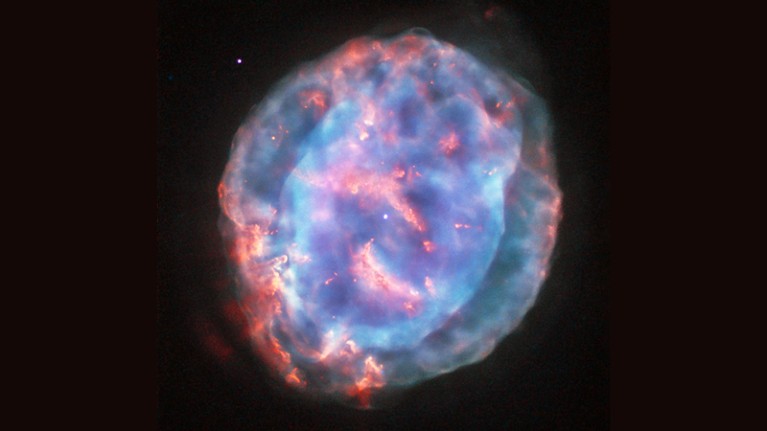
Planetary nebula are one of the most striking sights in the heavens.Credit: ESA/Hubble & NASA
Given that they spend their nights drenched in the astounding wonders of the cosmos, the word ‘exceptional’ probably comes a little harder for an astronomer than for those of us more concerned with the routine of Earthly pursuits. What can make a star-watcher draw breath and look again? A star with its coat on back to front would probably do it.
So it proves. In this week’s Nature Astronomy, researchers detail their amazement at the newly discovered secrets of HuBi 1: a star that hides its shine beneath a murky shell of dust. Or, as the scientists put it: the first inside-out planetary nebula around a born-again star (M. A. Guerrero et al. Nature Astron. https://doi.org/10.1038/s41550-018-0551-8; 2018).
Typically, stars inside a planetary nebula ionize gaseous material previously ejected — so the surrounding shell of material closest to the star’s surface is affected the most. But not HuBi 1. Here, the innermost regions are less ionized.
Simulations of stellar evolution suggest a likely — but rare — cause: the star had started to ionize its nebula, but then went through a period of rebirth to briefly flare again, re-igniting its nuclear fuel. In the process, it burped out a little extra material. This generated a shock wave that did some ionization of its own, but farther away from the surface. That shock wave is leaving dust behind as the material cools. Exceptional.



